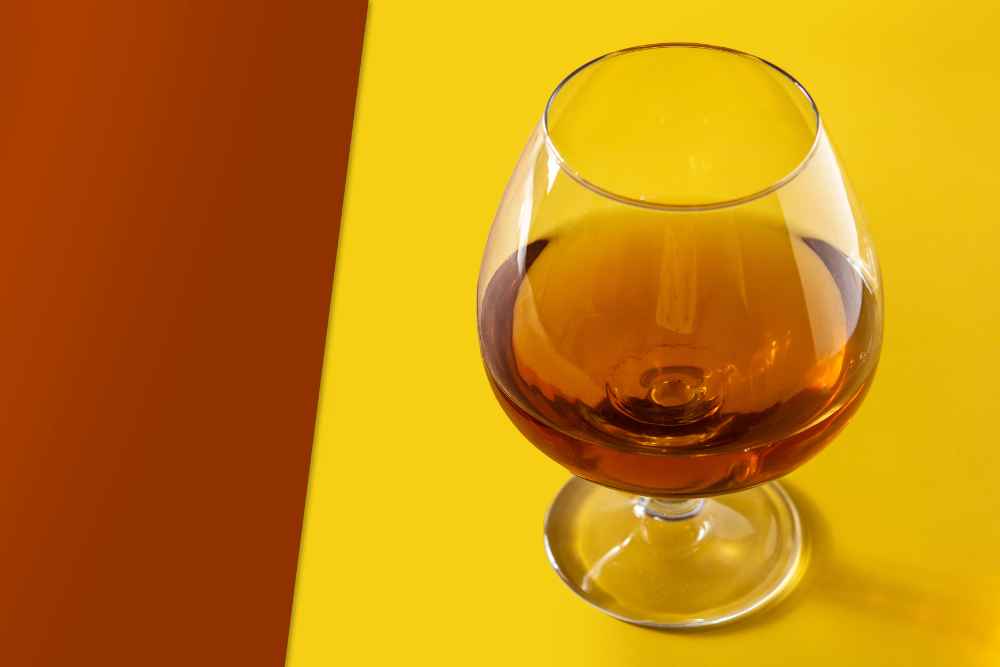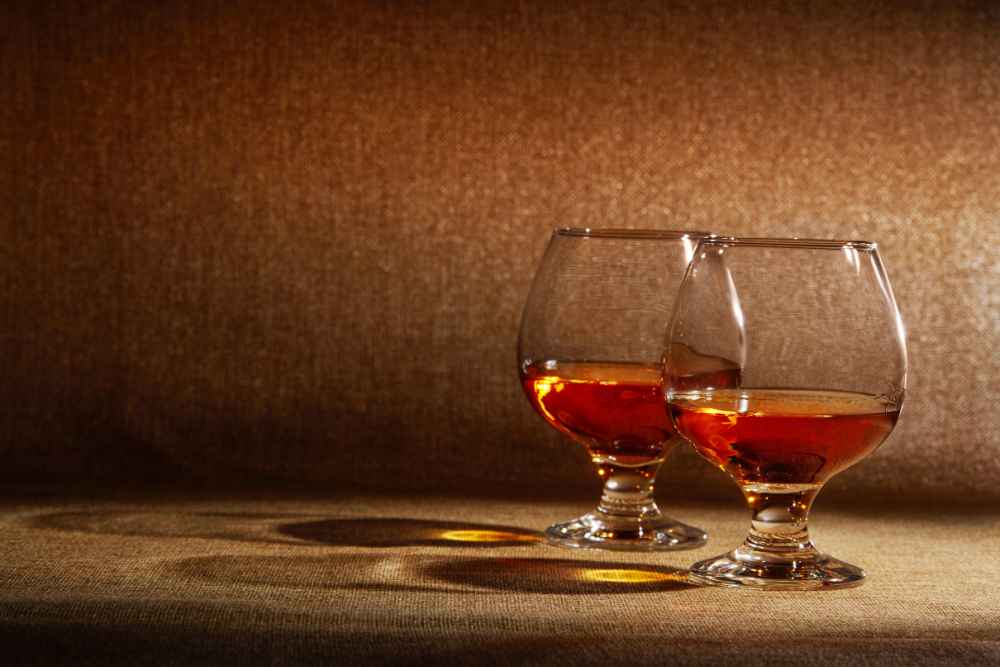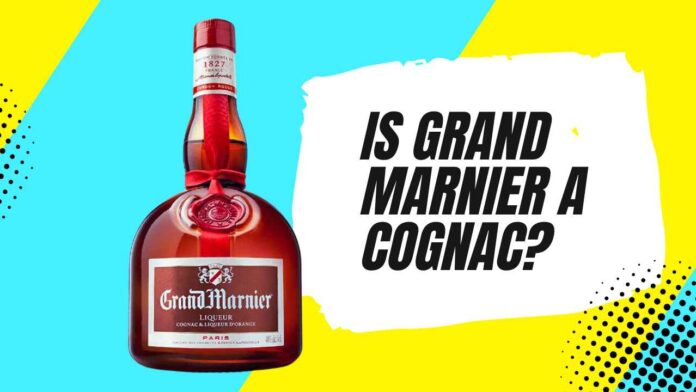This page may contain affiliate links. Please see our Disclaimer for more information. Always drink responsibly and adhere to your local legal drinking age.
Introduction
As you sip on a sophisticated cocktail or savor the rich flavors of an indulgent dessert, you might have stumbled upon the intriguing question: Is Grand Marnier a cognac? This luxurious French liqueur has captured the hearts and palates of connoisseurs worldwide with its unique blend of fine cognacs and exotic bitter orange essence.
This blog post’ll delve into a surprising truth behind one of alcohol’s most iconic bottles.
Key Takeaways:
- According to legal definitions and industry opinions, Grand Marnier is not a Cognac, even though it contains fine Cognac as an ingredient.
- Grand Marnier’s unique blend of brandy and bitter oranges sets it apart from traditional cognacs in terms of flavor profile and ingredients used.
- Grand Marnier and Cognac feature a distillation process vital to producing their distinct taste profiles. However, the aging process between the two spirits differs significantly.
- The history behind Grand Marnier shows how innovation led to the creation of one of the world’s most iconic liqueurs – enjoyed for over a century in classic cocktails or served neat as an after-dinner drink.
Understanding Grand Marnier And Cognac

Grand Marnier is a type of orange-flavored liqueur, whereas Cognac is a brandy made from specific grapes in the Cognac region of France.
What Is Grand Marnier?
Grand Marnier is a world-renowned French liqueur that has captivated cocktail drinkers for over a century. Created in 1880 by Louis-Alexandre Marnier Lapostolle, this exquisite blend features high-quality cognac made using Ugni Blanc grapes sourced from five different Cognac crus and double-distilled in copper stills.
The result is a luxurious, amber-colored spirit boasting rich citrus aromas and intricate flavors ranging from candied orange to warming hazelnuts and vanilla notes.
This harmonious fusion of smooth cognac and vibrant orange essence sets Grand Marnier apart from its competitors like Cointreau or other triple sec liqueurs, bestowing it with a distinct complexity that makes it the “Cadillac” of popular orange liqueurs.
What Is Cognac?
Cognac is a brandy originating from the Cognac region in France. This elegant and refined spirit is made by double-distilling wine, specifically from Ugni Blanc grapes sourced from five distinct Cognac crus (regions).
The exquisite taste of cognac draws cocktail enthusiasts worldwide, making it an essential ingredient in many classic cocktails, such as the French Manhattan.
In addition to its standalone sipping appeal, cognac’s rich flavor is an ideal base for blending with other ingredients like orange liqueur or sweet vermouth.
The Differences Between Grand Marnier And Cognac
Grand Marnier and Cognac differ in their ingredients, distillation process, aging process, and flavor profile.
Ingredients Used
A key aspect that sets Grand Marnier apart from cognac is its unique blend of ingredients to create its distinctive flavor profile. At its core, Grand Marnier combines two primary elements: fine French cognac and bitter orange essence.
However, what makes Grand Marnier stand out among other spirits is the addition of exotic bitter oranges – specifically, Citrus bigaradia – which undergo a meticulous maceration process before being skillfully blended with aged cognac.
This marriage of flavors results in an undeniably rich and sophisticated taste that harmoniously balances citrusy notes with hints of spice and vanilla.
Distillation Process
One of the main differences between Grand Marnier and Cognac is their distillation process. While Cognac is made by distilling wine in copper pots, Grand Marnier goes through a multi-step process that includes macerating orange peels in neutral alcohol and then slowly steam-distilling them.
The resulting orange liqueur is combined with Cognac to create Grand Marnier’s signature flavor profile – simultaneously sweet and bitter, tinged with hints of hazelnut.
Aging Process
Grand Marnier’s aging process sets it apart from other orange liqueurs. After distillation, the eau-de-vie is aged in French oak barrels for a minimum of 12 months.
The oak imparts flavors of vanilla and hazelnut to the spirit and helps round out its flavor profile.
The prolonged aging process gives Grand Marnier its complex depth and character, making it an iconic ingredient in classic cocktails like Margaritas and Sidecars.
Even when sipped neat, the harmonious finish is a testament to the skillfully crafted blend of fine cognacs and exotic tropical oranges.
Flavor Profile
Grand Marnier boasts a unique flavor profile that differentiates it from other orange liqueurs. Made with cognac and bitter oranges, Grand Marnier has a simultaneously sweet and bitter taste, with notes of candied orange and hazelnut.
Adding vanilla to the liqueur gives it a smooth finish that lingers on the palate.
This harmonious blend of flavors makes Grand Marnier an essential ingredient in classic cocktails like Margaritas, Sidecars, and Cosmopolitans. It can also be sipped neat as an after-dinner drink or used in dessert recipes for a fun twist on traditional favorites.
The History Of Grand Marnier

Louis-Alexandre Marnier-Lapostolle created Grand Marnier in 1880, inspired by his love of cognac and adding extra drops to his orange-flavored liqueur.
Creation By Alexandre Marnier-Lapostolle
In 1880, Alexandre Marnier-Lapostolle created Grand Marnier by blending cognac with bitter orange liqueur. The idea was to create a harmonious balance between the two distinct flavors and produce an exceptional quality liqueur.
This innovation led to the iconic red ribbon bottle that we know today and has made Grand Marnier synonymous with sophistication and luxury in cocktail culture. The recipe for this exquisite blend of fine cognacs and tropical oranges is still skillfully executed at the distillery in Bourg-Charente, France using a time-honored tradition of master blenders working together since 1880.
Popularization In The 20th Century
In the 20th century, Grand Marnier gained popularity among cocktail enthusiasts and became an essential ingredient in many classic cocktails.
The liqueur’s distinct flavor profile, which is simultaneously sweet and bitter with candied orange and hazelnut notes, quickly made it a favorite among mixologists.
In fact, drinks like the Margarita and Sidecar would not be complete without a dash or two of Grand Marnier. Over time, this iconic liqueur has become synonymous with luxury drinking experiences – particularly when enjoyed on its own as an after-dinner drink or added to coffee for extra depth and complexity.
Grande Champagne And The Cuvée Du Centenaire
Grand Marnier’s Cuvée du Centenaire is a celebration of Maison Marnier Lapostolle’s 100-year anniversary, blending true cognacs and distilled essence of bitter orange from the Grande and Petite Champagne regions.
The cognac blends in this exquisite liqueur are aged up to 25 years, producing a perfect harmony of smoothness and intense flavors. With rich candied citrus notes, warming pine, and Earl Grey tea flavors, it is no surprise that the Cuvée du Centenaire has become an essential ingredient in classic cocktails such as Margarita or mixed drinks like Campari Orange.
The exceptional quality of the cognac blends combined with the aromatic essence of bigaradia creates a harmonious finish that leaves you craving more.
Is Grand Marnier A Cognac?
We will explore legal definitions and opinions within the industry to determine whether Grand Marnier is, in fact, a cognac.
Legal Definitions
Legally, Grand Marnier is not considered a Cognac. Although it contains fine Cognac as one of its ingredients, the French government has strict regulations on what can be called Cognac.
For a spirit to be classified as Cognac, it must come from specific regions within France and adhere to other strict guidelines. Grand Marnier falls under “liqueur” rather than “Cognac.” However, this doesn’t change the fact that Grand Marnier is a premium orange liqueur with exceptional quality and flavor profile.
Opinions Within The Industry
There has been some debate within the industry about whether Grand Marnier can be classified as a cognac. Some argue that it should hold the same title because it contains cognac.
However, others contend that its unique blend of brandy and bitter oranges sets it apart from cognac entirely. Regardless of where one falls on this spectrum, there’s no denying that Grand Marnier is a beloved and iconic orange liqueur with a flavor profile like no other.
Final Determination
So, is Grand Marnier a cognac? The answer is no. Though it does contain fine cognacs as one of its ingredients, it cannot be classified as a cognac due to legal definitions and industry opinions.
According to French law, only brandies made in the Cognac region of France can be called cognacs.
Despite not being a cognac, Grand Marnier remains an iconic orange-flavored liqueur that has been enjoyed responsibly since 1880. It’s perfect for sipping neat or adding depth and complexity to cocktails like margaritas or classic cocktails like the Sidecar or Cosmopolitan.
How To Enjoy Grand Marnier
Enjoy Grand Marnier by sipping it straight as an after-dinner drink, adding it to cocktails for extra depth and complexity, or using it in food recipes for a unique twist.
Sipping It Straight As An After-dinner Drink
One of the best ways to enjoy Grand Marnier is by sipping it straight as an after-dinner drink. The smooth and complex flavor profile is perfect for unwinding after a meal, with its orange peel, vanilla, and hazelnut notes.
If you want to add extra sweetness to your sip, pair it with dark chocolate or fruit desserts like crème brûlée. It’s also worth noting that Grand Marnier is a popular digestif choice among high-end restaurants around the world, such as Bergdorf Goodman in New York City, which serves their “Mirrored Manhattan” cocktail: one part rye whiskey, one part Carpano Antica sweet vermouth blend with half parts Grand Marnier Cordon Rouge then garnished with dehydrated lemon wheel atop a toasted marshmallow.
Adding It To Cocktails For Extra Depth And Complexity
When it comes to adding Grand Marnier to cocktails, the possibilities are endless. Its sweet and bitter orange flavor profile adds depth and complexity to any mixed drink.
For instance, add a splash of Grand Marnier to a classic Margarita for a refreshing twist with added tropical notes.
The harmonious finish of this liqueur can also be enjoyed on its own as an after-dinner beverage or paired with desserts. Using Grand Marnier in food recipes like glazes or marinades can create an exotic touch that elevates dishes from ordinary to exceptional quality.
Using It In Food Recipes For A Unique Twist
If you’re looking for a way to add excitement to your culinary adventures, look no further than Grand Marnier. This versatile liqueur can be used in various food recipes to give them a unique twist.
For example, try adding it to your favorite cake recipe or using it as an ingredient in homemade ice cream.
One of the most popular ways to use Grand Marnier in food is by incorporating it into desserts. Its sweet and citrusy flavor pairs perfectly with rich chocolate cakes and creamy custards.
In summary, Grand Marnier isn’t just for sipping on its own or mixing into cocktails – it’s also an excellent addition to many different dishes.
FAQ
Q: Is Grand Marnier A Cognac?
A: Grand Marnier is technically not a cognac but a cognac-based orange-flavored liqueur.
Q: What is Grand Marnier?
A: Grand Marnier is a liquor made by blending aged cognac with orange essence and sugar to create a unique orange-flavored liqueur.
Q: Who invented Grand Marnier?
A: Grand Marnier was invented by Louis-Alexandre Marnier Lapostolle in 1880.
Q: Where is Grand Marnier made?
A: Grand Marnier is made in Neauphle-le-Château, France at the Société des Produits Marnier Lapostolle distillery.
Q: What is the difference between Grand Marnier and other orange liqueurs?
A: The difference between Grand Marnier and other orange liqueurs is that it is made from cognac, which gives it a more complex and smooth flavor profile, compared to other orange liqueurs made from neutral spirits.
Q: What is the ABV (alcohol by volume) of Grand Marnier Cordon Rouge?
A: The ABV of Grand Marnier Cordon Rouge liquor is 40%.
Q: How is Grand Marnier made?
A: Grand Marnier is made using a time-honored tradition of alchemy, which involves blending cognac that has been aged for at least two years with the distilled essence of bitter oranges and then adding sugar to create the signature orange-flavored liqueur.
Q: What is the meaning of the wax seal on a Grand Marnier Cordon Rouge bottle?
A: The wax seal on a bottle of Grand Marnier Cordon Rouge liquor symbolizes the care and attention that goes into making this liqueur. It is also a sign of quality and authenticity.
Q: How should I use Grand Marnier in a cocktail?
A: Grand Marnier is a versatile liquor that can be used in various cocktails. It is particularly good in Grand Margaritas, Sidecars, and Cosmopolitans.
Q: What is the history of Grand Marnier?
A: Grand Marnier has a rich history that dates back to 1880 when Louis-Alexandre Marnier Lapostolle created it. The company, Des Produits Marnier Lapostolle S.A, has been producing Grand Marnier ever since, using the same time-honored tradition of blending cognac and bitter oranges with sugar to create a unique orange-flavored liqueur.
Q: What makes Grand Marnier so special?
A: Grand Marnier is so special because it results from a time-honored tradition of alchemy that has been passed down from one generation to another since 1880. It is made using the finest ingredients and skillfully and carefully crafted to create a signature expression of the liquor known and loved worldwide.
Conclusion
In conclusion, Grand Marnier is not technically a Cognac. However, it is made from high-quality ingredients and uses the same distillation process as Cognac.
The history of this iconic brand goes back over 100 years and has been enjoyed in cocktails or sipped neat as an after-dinner drink. Whether you prefer to use it in recipes or enjoy it straight, Grand Marnier offers a unique flavor profile that adds depth and complexity to any beverage or dish.



















